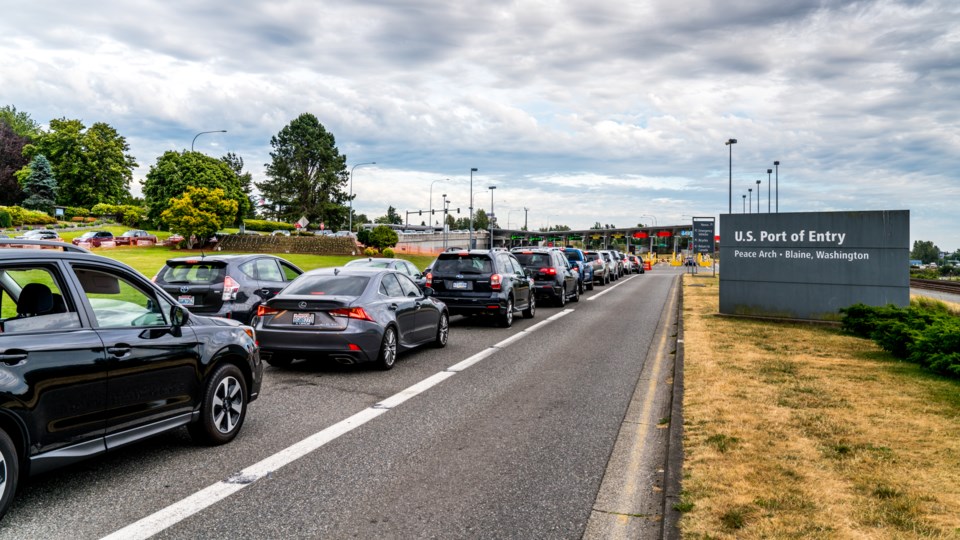Canadian business travellers hoping to work in the U.S. face significant delays, apparently as fallout from that country’s America First executive order.
The problem arises for Canadian workers who hold an L-1 visa. That specialized document is required for foreign nationals working for U.S. employers in specific daily business operations, typically managerial and executive positions.
U.S. Customs and Border Protection (CBP) has changed the application policy. Canadians looking to reapply are told to file with the U.S. Citizenship and Immigration Service (USCIS) – and that could take up to six months to be approved.
Under the previous system, Canadian business travellers looking to reapply for an L-1 visa would arrive at any U.S. port of entry with the necessary paperwork and the application could be adjudicated in two hours.
“It results in quite a bit of delay, additional cost and inconvenience to Canadian clients,” said Ieva Aubin, an employment and immigration partner at the law firm Dorsey and Whitney in Seattle, Wash.
The recent America First executive order directs all government agencies to formulate policies and practices to encourage citizens to buy and hire American.
“A preference is being created for the timeliness of a U.S. worker being available,” said Audrea Golding, a partner at law firm Fragomen, based in Toronto, and an expert in U.S.-Canada cross-border immigration.
Canadians used to hold a competitive advantage over other nationalities in L-1 visas. The North American Free Trade Agreement (NAFTA) made Canadians exempt from filing L-1 reapplications with USCIS, allowing Canadian workers to process reapplications at any U.S. port of entry.
“From the U.S. government’s perspective, this is in line with the buy America, hire America executive order,” said Golding.
In many cases, the end result is not only lost opportunities for Canadian workers, but many U.S. companies also struggle to hire skilled workers.
“There are some real inequities that have been created by this policy when it comes to Canadian business,” said Golding.
The L-1 visa differs from the standard B-1 visa that many Canadian and international business travellers use to enter the U.S. Travellers who qualify for a B-1 visa are visiting the U.S. for one-off business functions such as meetings and conferences, or contracted repair work on specialized equipment.
“For B-1, you have to be coming into the United States for business purposes, but not working purposes,” said Aaron Bowker, CBP public affairs liaison with the Buffalo, N.Y., field office. “If you’re being paid directly by someone in the U.S., then you need a work visa.”
Although the CBP enforcement policy change doesn’t affect the process for Canadians travelling on a B-1 visa, those seeking to be admitted into the U.S. on a B-1 have reported increased questioning at U.S. ports of entry and are being required to produce more evidence to support their B-1 claim.
“What we’ve noticed in the last couple of years, but more so recently, is this additional scrutiny at ports of entry when it comes to Canadian business travellers,” said Aubin.
Some frequent business travellers are even being asked to obtain L-1 work visas, which is a surprise for individuals who have used B-1 visas for years when travelling to the U.S.
“If you are a business person who travels to the U.S. on a regular basis, you should be prepared for additional questioning,” said Aubin.
Bowker recommends all business travellers carry sufficient documentation to prove to CBP that they aren’t seeking unauthorized employment in the U.S.
According to Bowker, business travellers should have a detailed itinerary of the trip, a company letter endorsing their activities, payment information and company identification to help ensure smooth travel across the border.
More information on L-1 stays and B-1 classifications are available on the USIC website:
Mark Wiseman has worked in energy and commodity trading for over 10 years. He covers stories in politics, business, and entertainment for Troy Media.
SWIM ON:
- The Business Council of British Columbia saw some worrisome trends on the horizon for the provincial economy.
- Geoff Costeloe discussed the Donald Trump phenomenon - among other things - while bemoaning a lack of leadership.
- Gwyn Morgan goes into depth on the difference between Canadian and US tax laws.



